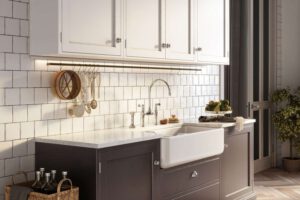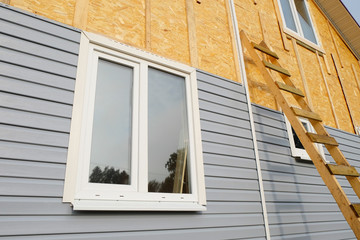How to Transform Your Kitchen With a New Layout, Countertops, and Backsplash
A kitchen renovation is a big commitment but can revitalize your home’s functionality. You can transform the room by updating your cabinetry, rethinking your layout, or changing your backsplash.
You can keep things consistent by opting for matching cabinetry or mixing it up with an eclectic assortment of materials and styles. Just make sure to carefully curate your hardware so your kitchen doesn’t look haphazard. For more information, visit https://www.tacomakitchenremodel.com/.
Whether you’re installing an entire new kitchen or simply replacing cabinets, layout is one of the most important aspects of any renovation. It determines how the room functions for day-to-day activities and influences how easily moving around is. A well-designed floor plan will make your kitchen livable and improve your home’s value.
A time-tested design concept known as the work triangle is a good starting point for planning your new kitchen. It outlines the location of your refrigerator, stove (or cooktop) and sink so that you can easily move between them while cooking.
Adding or reconfiguring storage is another way to make your kitchen more functional and attractive. This may include upgrading to drawers instead of basic shelves, removing upper cabinets and installing open shelving or revamping the backsplash. A backsplash adds color and texture to the kitchen and protects walls from steam, water and food splashes. It’s also an opportunity to showcase your style through a unique material, such as mosaic tile or a patterned paper.
Lighting
Your lighting plan is a crucial part of your kitchen renovation that can have a huge impact on both the look and functionality of your new kitchen. Lighting can create a warm, inviting atmosphere and highlight your favorite design elements, so it’s worth spending the time to choose fixtures that reflect your personality.
The first step is to consider the size and scope of your kitchen remodel, which is determined by a number of factors including your budget, desired timeline and whether you want to change the layout of the room. A major kitchen upgrade might require tearing down walls and reconfiguring the floorplan, which would involve permits.
For instance, if you have lower cabinets, you may have to sacrifice storage space in order to install large windows that connect your kitchen to the outdoors. This can dramatically open up the space and create a bright and welcoming mood. The next step is to consider your supplemental lighting. Ambient lighting, task lighting and accent lighting all serve a different purpose but should work together to create a cohesive design.
Cabinets
Cabinets are a significant investment so it’s important to carefully choose the design, materials and fittings. Many homeowners use the kitchen renovation as an opportunity to update outdated cabinet hardware and add new features like recessed outlets or an appliance garage (a cabinet with doors for small appliances that hides their electrical plugs).
The type of cabinets you install can dramatically change your kitchen’s look. A simple switch from Shaker-style doors to flat panels can refresh your space without altering the footprint. And adding a wood ceiling or refinishing existing tongue-and-groove can be an affordable way to update the room.
Choosing cabinet back construction is an important factor because it determines how long your cabinets will last. The best choice is plywood, which resists warping and bending. More expensive options include wood from leaf-dropping trees and high-end exotic woods. For a more rustic aesthetic, consider faux finishes that add manufactured imperfections, such as wormholes or rasping, to the wood. These techniques may also be applied to countertops to mimic the appearance of aged stone.
Countertops
Countertops aren’t typically something you swap out frequently, so it’s worth taking the time to choose a durable material that will last for years. Popular choices include natural stone, quartz, granite, tile, wood and plastic laminate.
Granite is a perennial top choice, offering a wide range of colors and patterns to suit nearly any kitchen design. Though it stains easily, sealing your countertops twice a year with food-grade penetrating sealer can help mitigate its tendency to absorb moisture.
Man-made engineered quartz counters are a popular alternative to natural stone, with a nonporous surface that’s resistant to heat, scratches and etching. It’s also available in a variety of colors and can be integrated with backsplashes for a seamless look.
For a more organic touch, consider wood countertops. This versatile option can be stained with a food-safe blue, green or red color to add visual interest. For a more durable option, choose a solid-core plywood slab that’s been reinforced with a cement backerboard. You can purchase a custom-cut, solid-surface countertop from a fabricator or opt for a prefabricated piece at a home center.
Appliances
A kitchen renovation isn’t complete without new appliances. The size, type and style of ovens, refrigerators and dishwashers you choose will impact your entire layout.
The most popular appliance upgrades are stainless-steel models that coordinate with the rest of your kitchen. Other popular choices include gas cooktops paired with double wall ovens, smart appliances and panel-ready models that can be customized to match the new cabinets or add a pop of color.
Whatever upgrades you choose, be sure to factor in energy efficiency. Replacing old fridges and stoves with energy-efficient models can make your kitchen significantly more environmentally friendly. Other ways to go green in your kitchen include adding a GFCI outlet and moving electrical outlets away from water sources. Also consider reducing your carbon footprint by choosing appliances that use less electricity or are powered by natural gas. Avoid over-customizing your kitchen, as it may limit the appeal of your home to future buyers. Instead, focus on the features that will improve how you and your family enjoy your kitchen.
Flooring
Choosing the right flooring is one of the biggest decisions you’ll make in your kitchen remodel. It sets a tone for the room and can impact your home’s resale value.
Flooring should be chosen before cabinetry if possible to minimize potential damage during the renovation process. With multiple tradespeople walking on the floor and heavy items being dropped, the surface is at risk of getting scratched or marked. Installing the floor first also allows you to protect it from water and other moisture.
Vinyl floors are available in many colors and patterns to suit any kitchen design, and can be a good option for budget-minded homeowners. Luxury vinyl plank (LVP) is a popular choice that looks and feels like wood or stone, but costs less.
Tile is another durable flooring material. It’s a great option for high-traffic areas, and can be laid in a variety of shapes and patterns to create visual interest. Consider radiant heat beneath your tiles for a warm, cozy kitchen.
Cabinet Hardware
Cabinet knobs and pulls may seem like minor details in a kitchen renovation, but the right hardware can add a jewelry-like finishing touch that makes stock cabinetry feel more custom or elevates bespoke built-ins. They’re also an easy way to change your kitchen’s look without spending a fortune.
There are many cabinet knob and pull styles to choose from, so think about the overall design of your home before selecting new hardware. For example, ultra-modern spaces might look best with streamlined designs, while historic or classic homes would suit hardware that feels period appropriate.
Another thing to consider is how far the handles or knobs will project out from the cabinets or drawers. A general rule of thumb is to choose hardware that is at least the same width as the raised framework around the cabinet hinges. If you’re reusing existing mounting holes, be sure to count them so that you can order replacements with the same center-to-center measurement. If you’re drilling new holes, be sure to consider using a backplate to hide existing screw holes.
Backsplash
A backsplash may seem like an extra feature in a kitchen, but it protects the wall area between the counter and cabinets from food splatters and grease stains. It also serves as a visual element to add color, texture and shape. Backsplashes come in a variety of styles, shapes and materials. They can range from wallpaper to tile to reclaimed wood.
Depending on the style, backsplashes can be eye-catching or subtle and can help create a cohesive look for the kitchen. Backsplashes can be extended as far as the cooktop or sink to create a sort of running backsplash or can be confined to a small space behind the stove.

